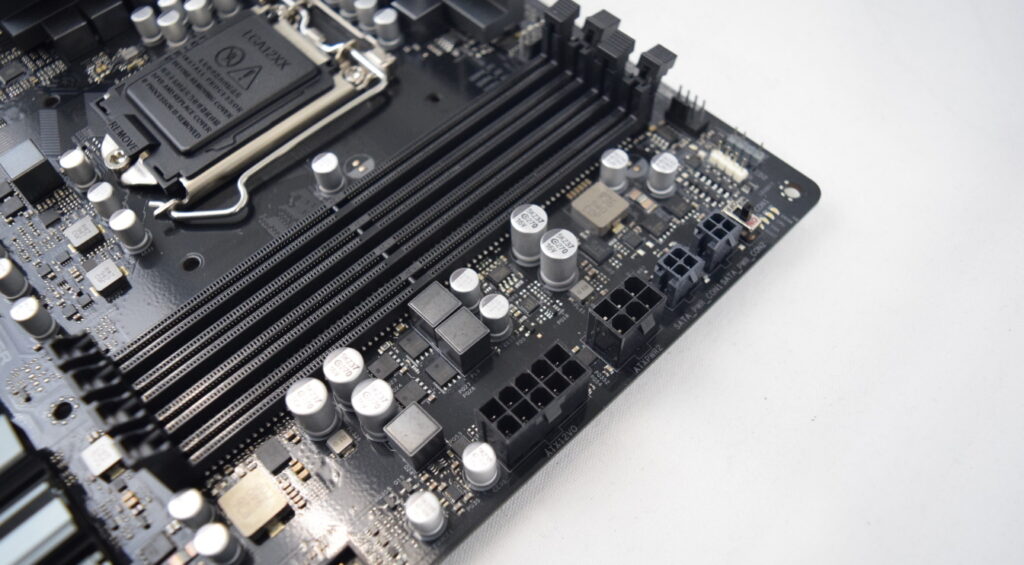The power supply unit can usually be found inside the case of a PC, and it is responsible for converting the direct current from your device’s power cord into alternating current that is compatible with standard household wiring. The ATX 12V 2.0 specifications are designed to enable Intel’s 6th generation Core processors for use in desktop motherboards, laptops, tablets and other devices.

Intel has officially announced the newest ATX PSU specifications, ATX 3.0 and ATX12VO 2.0, both of which were designed to support the increasing power demands of graphics cards and other next-generation hardware. Not that they’re any sort of mystery to enthusiasts who have been following the headlines over the last few months, but Intel has officially announced the newest ATX PSU specifications, ATX 3.0 and ATX12VO 2.0, both of which were designed to support the increasing power demands of graphics cards and other next-generation
Desktop customers who want the maximum performance out of their next-generation graphics cards will need PSUs that conform with ATX 3.0 and ATX12VO 2.0, according to Intel. Thanks to new requirements that feature a smaller connection, more flexible board designs, improved energy efficiency, and more, power and performance improvements are on the horizon for all desktop sectors, from full-size towers to SFF systems. MSI is being credited with being the first to release ATX12VO-based desktop systems in the shape of the Creator P100A and the MPG Trident AS, both of which are powered by Core CPUs, as Intel has made clear.

“Power supplies based on ATX 3.0 and ATX12VO 2.0 will guarantee that anybody searching for the most reliable and cost-optimized performance with the maximum power efficiency out of their desktop PCs can do so now and in the future,” said Stephen Eastman, Intel platform power expert.
New ATX PSU Specifications from Intel are now available (Intel Newsroom)
What’s New: Intel has released the most important upgrade to industry power supply requirements since the introduction of ATX 2.0 in 2003. ATX 3.0 requirements have been updated to unleash the full power and potential of next-generation hardware and forthcoming components designed for technologies such as PCIe Gen 5.0. Intel has also updated its ATX12VO specification to give the PC industry with an updated blueprint for developing power supply units (PSUs) and motherboards that minimize power draw at idle, allowing users to cut their electrical consumption.
It Consists Of: The following are some of the most significant new features to the ATX 3.0 / ATX12VO 2.0 specifications:
Most, if not all, future PCIe 5.0 desktop Add-in cards will be powered using a new 12VHPWR connection (e.g., graphics cards). Any PCIe 5.0 Add-in/graphics card may receive up to 600 watts from this new connection. It also has sideband signals that enable the power supply to transmit the maximum power it can give to any PCIe 5.0 graphic card.
The PCIe CEM Gen 5 power excursion limit for PCIe 5.0 add-in devices was released in November 2021, and the new recommendations reflect it. Increasing DC output voltage regulation is included in the updated specs, which will be required to manage new power excursion requirements.
The I PSU percent capability, which was previously only accessible on mobile and server platforms, is now available on desktop platforms with ATX12VO 2.0. Small form-factor (SFF) systems that can’t use bigger power supply benefit from this feature. It also saves money for original equipment manufacturers (OEMs) since they can better match PSU choices to system needs.
Why It Matters: With ATX 3.0 and ATX12VO 2.0 specifications, compatible PSUs will be critical for desktop customers looking to get the most out of their next-generation PCIe 5.0 desktop graphics cards. These next-generation cards will be larger and more powerful than previous versions. Users will be able to get the most out of their systems if they have the right power supply in place.
Beyond system performance, the ATX12VO requirement will be critical in assisting the PC industry in complying with a variety of government energy laws. OEMs and system integrators (SI) must employ exceptionally low system idle power levels to decrease desktop idle power usage, according to recently announced standards for full systems, such as the California Energy Commission’s Tier 2 appliance efficiency criteria. The ATX12VO standard is one of Intel’s attempts to increase efficiency for our industry partners’ OEM/SI systems and products.
The new specs, which include a smaller connection, more flexible board designs, and enhanced energy conversions, will have a favorable influence on power and performance gains across all desktop segments – from full-size towers to SFF systems.
What’s New: MSI recently announced the Creator P100A and MPG Trident AS, the first ATX12VO-based desktop systems, which are powered by 12th Gen Intel Core CPUs and an ATX12VO compatible power supply.
Throughout 2022, more devices based on the new ATX 3.0 and ATX12VO 2.0 standards are planned to come.
Return to the thread
Recent Developments
Suicide Squad: Kill the Justice League has been officially postponed until 2023, according to Rocksteady.
23rd of March, 2022 23rd of March, 2022
Microsoft and Okta Respond to Cyberattacks by Lapsus$
23rd of March, 2022 23rd of March, 2022
A PlayStation 5 Pro with twice the performance is expected to be released in 2023/2024.
22nd of March, 2022 22nd of March, 2022
Ghostwire: Tokyo, Tiny Adds Support to NVIDIA GeForce Game Ready 512.15 Driver Tina’s Wonderland is a fantasy world created by Tina.
22nd of March, 2022 22nd of March, 2022
Casey Hudson (Director of the Mass Effect Trilogy) is working on a “All-New Science-Fiction Universe.”
22nd of March, 2022 22nd of March, 2022
Fuzzy Controllers are included with the Sonic the Hedgehog 2 Xbox Sweepstakes.
22nd of March, 2022 22nd of March, 2022








More Stories
Unbelievable but True: The Biggest Gambling Wins That Shocked The World
Why Free Spins Are a Game-Changer in Online Slot Games
Why Casino Table Games Are the Ultimate Test of Skill and Luck